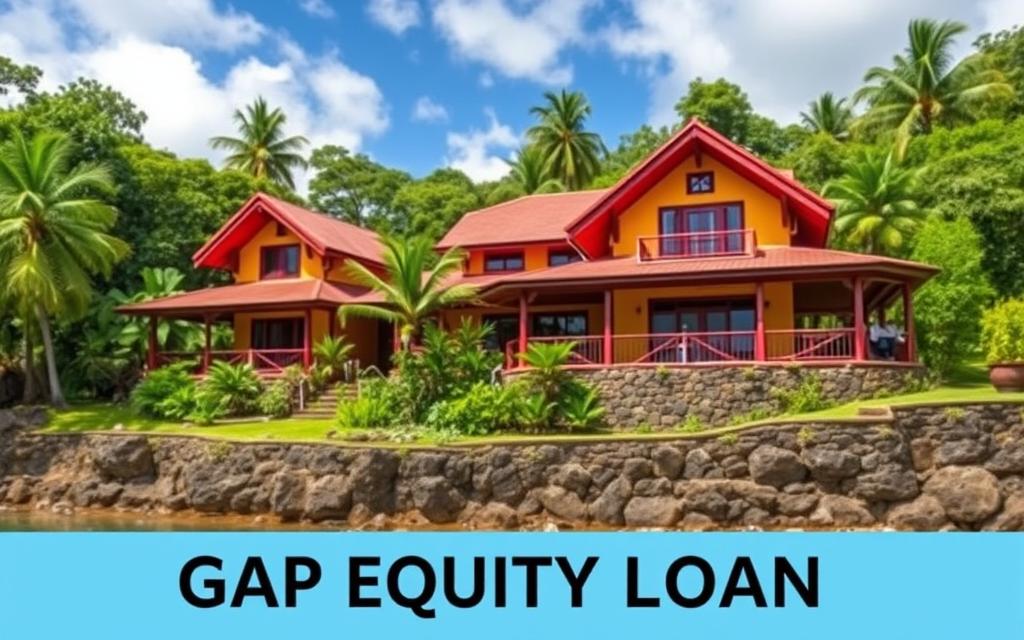Get access to asset-based-lending-options-in-costa-rica with our private lending solutions. We simplify the process for investment property financing in Costa Rica.

Repayment Terms of Bridge Loans in Costa Rica
Bridge loans in Costa Rica offer a vital financing solution for property buyers and investors who require quick access to capital. We connect borrowers with private investors and lenders, providing competitive rates and flexible financing options.
These short-term loans enable individuals to seize opportunities in the Costa Rican real estate market that might otherwise be out of reach due to the time constraints associated with traditional mortgage processes. Understanding the repayment terms is crucial for borrowers to plan their financial strategy effectively.
Bridge loans typically feature shorter repayment periods, ranging from 6 months to 3 years, with various interest rate structures and repayment schedules available. By grasping these terms, borrowers can make informed decisions about this financing option in Costa Rica’s property market.
Understanding Bridge Loans in the Costa Rican Market
In Costa Rica’s competitive real estate market, bridge loans offer a vital financing solution for investors and property buyers. We aim to simplify the process, helping hardworking individuals secure the financing needed to achieve their investment property goals without unnecessary hurdles.
What Are Bridge Loans and How Do They Work in Costa Rica?
Bridge loans in Costa Rica function as short-term financing solutions, designed to bridge the gap between immediate capital needs and long-term financing arrangements. These loans are particularly valuable for property investors, developers, and buyers who need to act quickly on opportunities or require immediate funds for property renovations before securing permanent financing. Costa Rican bridge loans are secured by the property itself, with loan-to-value ratios typically ranging from 50-70% depending on the property type, location, and borrower profile.
Key Differences Between Bridge Loans and Traditional Mortgages
Unlike traditional mortgages that may take weeks or months to process, bridge loans in the Costa Rican market can be secured quickly, often within days, making them ideal for time-sensitive real estate opportunities. The key difference between bridge loans and traditional mortgages in Costa Rica lies in their repayment structure – while mortgages are designed for gradual repayment over many years, bridge loans require a clear exit strategy for full repayment within a relatively short timeframe. This typically involves one of three options: refinancing with alternative long-term finance, selling the financed property for profit, or selling an existing property.
Current Bridge Loan Options in Costa Rica
In Costa Rica, bridge loans provide a versatile financial tool for property owners and investors. These loans are particularly useful for those looking to leverage their property to access funds quickly.
At GAP Equity Loans, we offer bridge loans in Costa Rica, allowing you to use your Costa Rican property as collateral to borrow money, with loan amounts ranging from $50,000 to $1,000,000. Our interest rates start at 12% and are determined based on the loan-to-value (LTV) ratio, among other factors. We provide flexible loan terms from 6 months to 3 years.

Types of Properties That Qualify as Collateral
Various types of properties qualify as collateral for bridge loans in Costa Rica. These include residential homes, vacation properties, commercial buildings, development land, and in some cases, agricultural properties.
Properties located within the maritime zone (within 200 meters of the high tide line) have special considerations due to Costa Rica’s concession-based ownership structure in these areas.
Typical Loan Amounts and Approval Requirements
Bridge loan amounts in Costa Rica typically range from $50,000 to $1,000,000. The specific amount is determined by the property’s value, location, and the borrower’s financial profile.
Approval requirements generally include a property appraisal, verification of the property’s legal status, proof of income or assets, and a clear exit strategy for loan repayment. Foreign borrowers may face additional requirements compared to Costa Rican residents.
For more information on the risks associated with bridge loans in Costa Rica, you can visit our page on the risks of bridge loans.
Standard Repayment Terms of Bridge Loans in Costa Rica
When considering bridge loans in Costa Rica, understanding the standard repayment terms is crucial for borrowers. These terms can significantly impact the overall cost of the loan and the borrower’s ability to repay it.
Loan Duration: From 6 Months to 3 Years
Bridge loan durations in Costa Rica typically range from 6 months to 3 years. Most loans are structured for 12-18-month terms, allowing borrowers sufficient time to implement their exit strategy. This flexibility in loan duration helps borrowers manage their financial obligations effectively.
Interest Rate Structures and Calculations
Interest rates for Costa Rican bridge loans start at 12% and can vary based on factors such as loan-to-value ratio (LTV), property type, borrower profile, and market conditions. Unlike traditional mortgages, bridge loans often use simple interest calculations, affecting how monthly payments are determined and the loan balance reduces over time. For more information on how bridge loans work, you can visit our page on understanding Costa Rica bridge.
Monthly Payment Expectations
Monthly payment expectations for bridge loans in Costa Rica vary based on the loan structure. Some loans require monthly interest-only payments with the principal due at maturity, while others may capitalize interest and require a single balloon payment at the end of the term. Borrowers should anticipate higher monthly payments compared to long-term financing due to elevated interest rates, making a solid exit strategy essential.
- Loan terms are generally shorter, often between one and three years.
- Interest rates range from 10 to 15 percent, with 12% as a starting point.
- Monthly payments can be interest-only or include capitalized interest.
Financing Costs and Additional Fees
Understanding the full scope of fees associated with bridge loans is crucial for borrowers in Costa Rica. When we consider a bridge loan, it’s not just the interest rate that matters; various fees can significantly impact the total cost.
Origination and Administrative Fees
Bridge loans in Costa Rica typically come with origination fees that range from 1% to 3% of the loan amount. Private lenders often charge on the higher end of this spectrum compared to institutional lenders. Additionally, administrative fees, including application fees, processing charges, and underwriting costs, can add 0.5% to 1% to the total loan expense.
Legal and Registration Costs
Legal and registration costs are significant considerations in the Costa Rica real estate financing process. These costs include notary fees, mortgage registration (when applicable), and legal document preparation, typically amounting to 1.25-2% of the transaction value.
Early Repayment Penalties and Options
Early repayment options vary significantly between lenders in Costa Rica. Some lenders charge substantial penalties, equivalent to 3-6 months of interest, while others offer more flexible terms that allow for penalty-free early repayment after a minimum period. We provide competitive rates, lower fees, and flexible financing options compared to traditional banks, making it easier for borrowers to manage their bridge loan repayments.
By understanding these financing costs and additional fees, borrowers can better plan their budget and make informed decisions about their bridge loan in Costa Rica.
Exit Strategies for Bridge Loan Repayment
When considering a bridge loan in Costa Rica, it’s crucial to have a well-planned exit strategy. This ensures that you can repay the loan efficiently and effectively. We will explore the primary exit strategies available for repaying bridge loans.
Refinancing with a Traditional Mortgage
Refinancing with a traditional mortgage is a common exit strategy for those intending to keep their property in Costa Rica. This typically involves meeting specific lender criteria and may require a waiting period of 6-12 months after the initial bridge loan, especially for properties that have undergone significant renovations.
Property Sale as a Repayment Method
For investors and developers, selling the financed property is a viable exit strategy. Costa Rica’s active real estate market provides opportunities for profitable property sales, with the proceeds covering the outstanding loan balance.
Using Investment Returns or Personal Funds
Using investment returns or personal funds is another exit option, particularly suitable for borrowers with anticipated income from business operations or investment maturity planned to coincide with the bridge loan maturity. Experienced lenders often require a primary exit strategy and a backup plan to ensure loan repayment.
We understand that the viability of each exit strategy depends on various factors, including Costa Rica’s real estate market conditions, property location, and the borrower’s financial situation.
Legal Considerations for Bridge Loan Agreements
Navigating the legal landscape of bridge loan agreements is essential for successful real estate transactions in Costa Rica. When securing a bridge loan, understanding the legal mechanisms available is crucial for both lenders and borrowers.
Mortgage vs. Trust Mechanisms in Costa Rica
In Costa Rica, two primary security mechanisms are used for bridge loans: traditional mortgages and trust arrangements. Mortgages are the most common and straightforward, requiring formal documentation signed before a Costa Rican Notary Public and registration in the National Registry. Trust mechanisms, or fideicomisos, offer an alternative, particularly for properties that cannot be mortgaged, such as concession properties in the maritime zone. For more information on bridge loans in Costa Rica, you can visit GAP Equity Loans.

Protecting Your Interests in the Loan Contract
Protecting borrower interests in Costa Rican bridge loan contracts requires careful attention to terms regarding partial releases, prepayment rights, default provisions, and currency exchange considerations. For lenders, essential protections include clear contractual domiciles for service of process and prohibitions on property transfer without consent. Ensuring that all documentation meets legal requirements and protects all parties’ interests is crucial, typically involving experienced real estate attorneys and taking 2-3 weeks from agreement to registration.
Challenges and Risks in Bridge Loan Repayment
Borrowers in Costa Rica face unique challenges when repaying bridge loans, including market fluctuations and currency risks. Bridge loan repayment in Costa Rica is subject to various risks that can impact a borrower’s ability to repay the loan successfully.
Market Fluctuations and Property Value Changes
Market fluctuations represent a significant risk factor that can affect property values and compromise planned exit strategies. Property value changes can occur due to broader economic conditions, local market shifts, or property-specific issues such as incomplete renovations or unexpected structural problems. For instance, if the regional property market suffers and property value drops, borrowers may find it challenging to sell the property or refinance the loan.
Currency Exchange Risks for Foreign Borrowers
Foreign borrowers face additional currency exchange risks when taking bridge loans denominated in currencies different from their primary income source. This can potentially increase costs significantly if exchange rates move unfavorably during the loan term. For example, if a borrower’s income is in Costa Rican colones but the loan is in US dollars, a depreciation of the colón against the dollar could increase the loan’s cost.
Strategies to Mitigate Repayment Difficulties
To mitigate repayment difficulties, borrowers can maintain contingency funds, secure pre-approved long-term financing when possible, obtain appropriate insurance coverage, and work with experienced advisors familiar with the Costa Rican property market. Building flexibility into their timeline and financial planning is also crucial, as bridge loan extensions in Costa Rica typically come with increased costs and more stringent terms.
- Maintain contingency funds to cover unexpected expenses.
- Secure pre-approved long-term financing to reduce refinancing risks.
- Obtain insurance coverage to protect against potential losses.
- Work with experienced advisors to navigate the Costa Rican market.
How GAP Equity Loans Structures Bridge Loan Repayments

Costa Rica’s real estate market benefits from GAP Equity Loans’ flexible bridge loan repayment options. We specialize in structuring bridge loan repayments in Costa Rica with a focus on customization and flexibility to meet the unique needs of each borrower’s situation.
Customized Repayment Plans Based on Borrower Needs
Our customized repayment plans are developed based on a thorough assessment of the borrower’s financial situation, property value, intended use, and specific exit strategy. This approach creates tailored solutions rather than one-size-fits-all approaches, helping borrowers achieve their investment property goals.
Flexibility in Term Length and Payment Structure
Flexibility in term length is a key feature of our offerings, with options ranging from 6 months to 3 years. This allows borrowers to align their bridge financing with their specific project timeline or investment strategy in the Costa Rica real estate market. Payment structures can be adapted to match the borrower’s cash flow.
Support Services Throughout the Loan Period
GAP Equity Loans provides comprehensive support services throughout the loan period, including regular property valuation updates, refinancing assistance, and guidance on navigating the Costa Rican mortgage market when preparing for loan exit. Our goal is to simplify the process, helping hardworking individuals secure the financing needed to achieve their investment property goals without unnecessary hurdles.
Conclusion: Making Informed Decisions About Bridge Loan Repayment
As we conclude our exploration of bridge loans in Costa Rica, it’s clear that informed decision-making is crucial for successful property investment. Understanding the complete landscape of bridge loan repayment terms is essential for making financial decisions that align with your property investment or home ownership goals.
GAP Equity Loans offers competitive bridge loan solutions with loan amounts from $50,000 to $1,000,000, interest rates starting at 12% based on loan-to-value ratios, and flexible terms ranging from 6 months to 3 years. When evaluating bridge loan options, borrowers should consider not only the interest rates and terms but also the lender’s flexibility and support services.
By understanding the repayment terms, exit strategies, and legal considerations, borrowers can navigate the Costa Rican financing landscape with confidence. Our goal at GAP Equity Loans is to simplify the process, helping hardworking individuals secure the financing needed to achieve their investment property goals without unnecessary hurdles.
Article by Glenn Tellier (Founder of CRIE and Grupo Gap)



